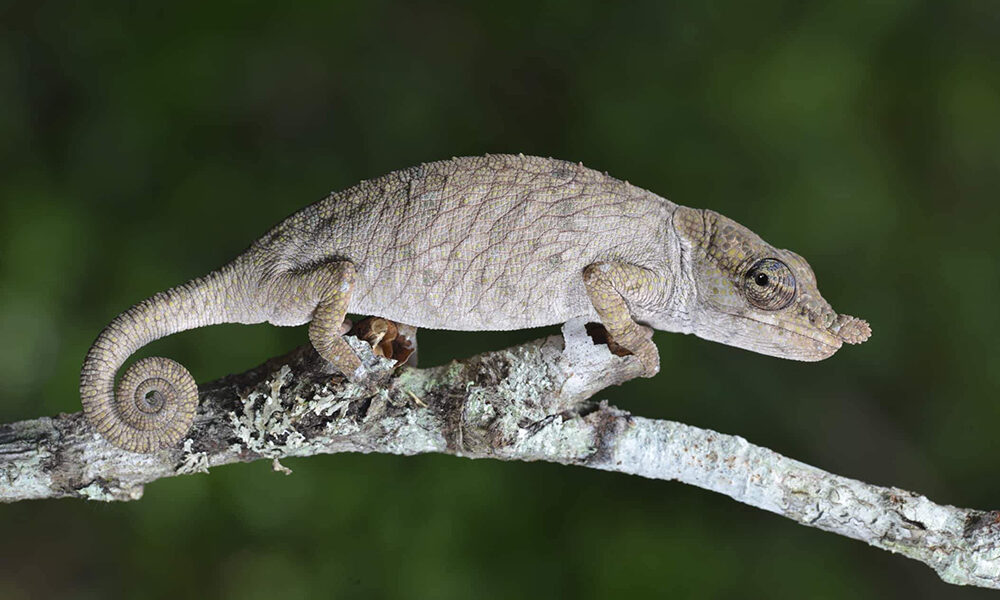Partner wanted
Even today, there are still species of chameleons for which an incredible amount of data is missing. For example, what the male or female of the species even looks like or whether there is a partner animal. Two examples of this lack of data are Calumma juliae and Furcifer monoceras.
Calumma juliae was only discovered in 2018. The species lives in a tiny forest remnant near Moramanga, a town in the eastern highlands of Madagascar. Despite an intensive search, no male of the species could be found. This raises the question of whether the species – which would be extremely unusual for chameleons – could possibly be capable of parthenogenesis (producing young). If so, these chameleons would not need males at all. However, this is not particularly likely.
In our second example, it is the other way round. Furcifer monoceras was last seen many, many years ago – namely before its description, in 1905 – near the coastal town of Mahajanga. However, only the male had been discovered, which is also hard to confuse due to its conspicuous, huge nose. The female, on the other hand, is unknown. To date, the species has not been found again and is considered lost. Initial efforts to find the species have unfortunately been unsuccessful. Many dry forests around Mahajanga no longer exist, so it could just as well be that the habitat of Furcifer monoceras has long since disappeared. With or without the chameleon, that is the big question. So it remains exciting!
#showyourcolours #internationalchameleonday #chameleonday #chameleondayMay9 #agchamaeleons
Photo: Calumma juliae female, photographed by Thorsten Negro
Internationaler Chamäleontag

